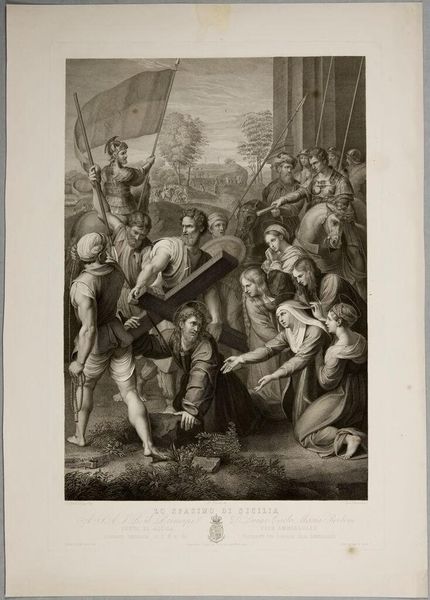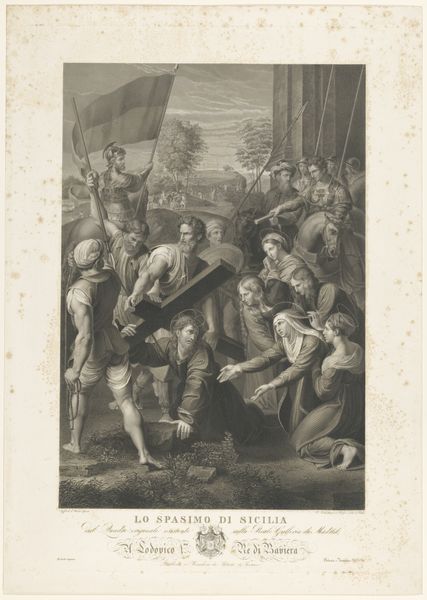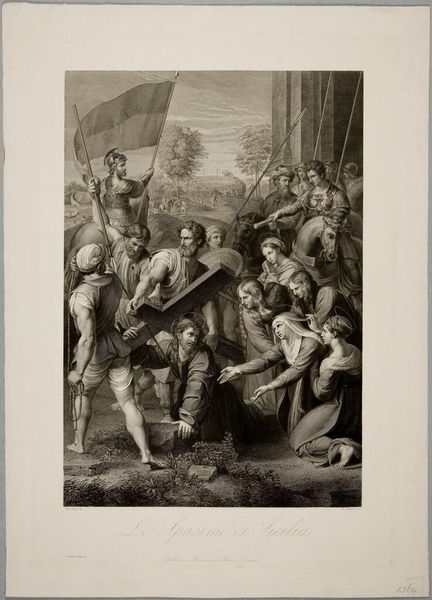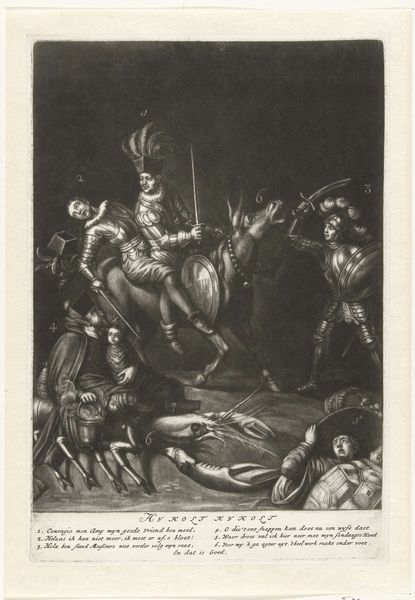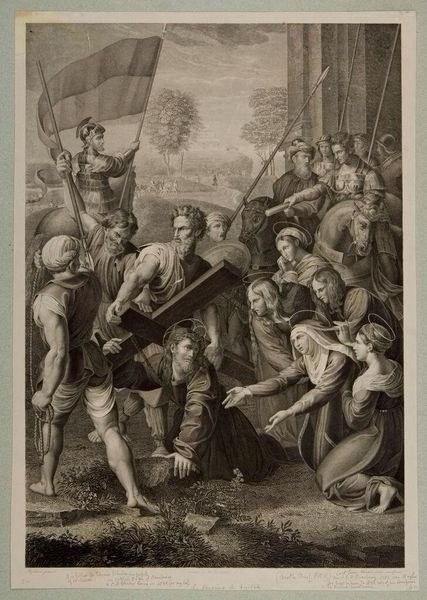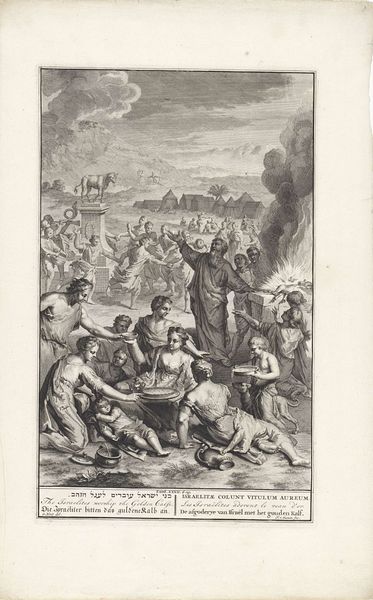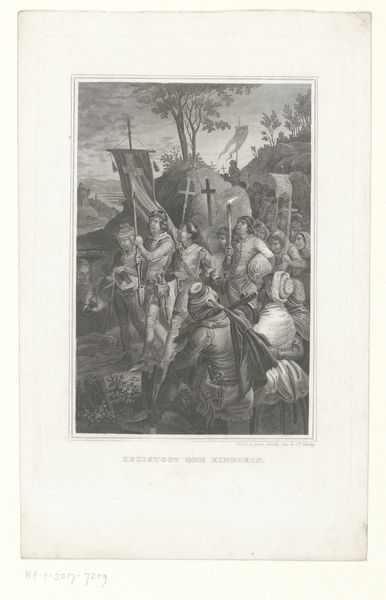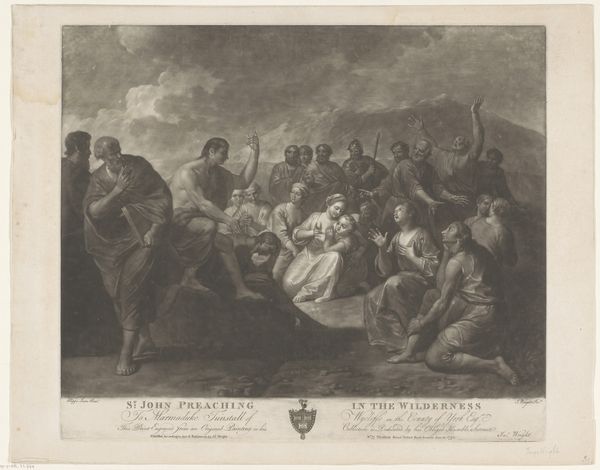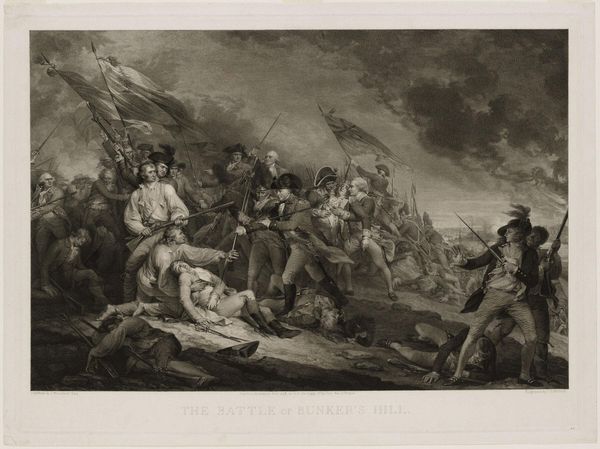
Dimensions: height 580 mm, width 405 mm
Copyright: Rijks Museum: Open Domain
This print, made by Domenico Cunego in the 18th century, captures a poignant moment. Cunego was a skilled engraver, and here he employs a painstaking process to translate a painting into a new medium. Engraving involves using a tool called a burin to incise lines into a metal plate. The plate is then inked, and the surface wiped clean, leaving ink only in the engraved lines. When paper is pressed against the plate, the image transfers. Look closely, and you'll see the characteristic crisp lines, capable of capturing incredible detail. But beyond the technical skill, consider the labor involved. Each line is a deliberate act, a testament to hours of focused work. This kind of printmaking was part of a larger system of image reproduction, allowing artworks to be disseminated widely. The success of the print depends not only on Cunego's expertise but also on the systems of production and distribution that underpinned the print market. It challenges the notion of the artist as a solitary genius, reminding us of the collaborative and commercial forces at play.
Comments
No comments
Be the first to comment and join the conversation on the ultimate creative platform.
